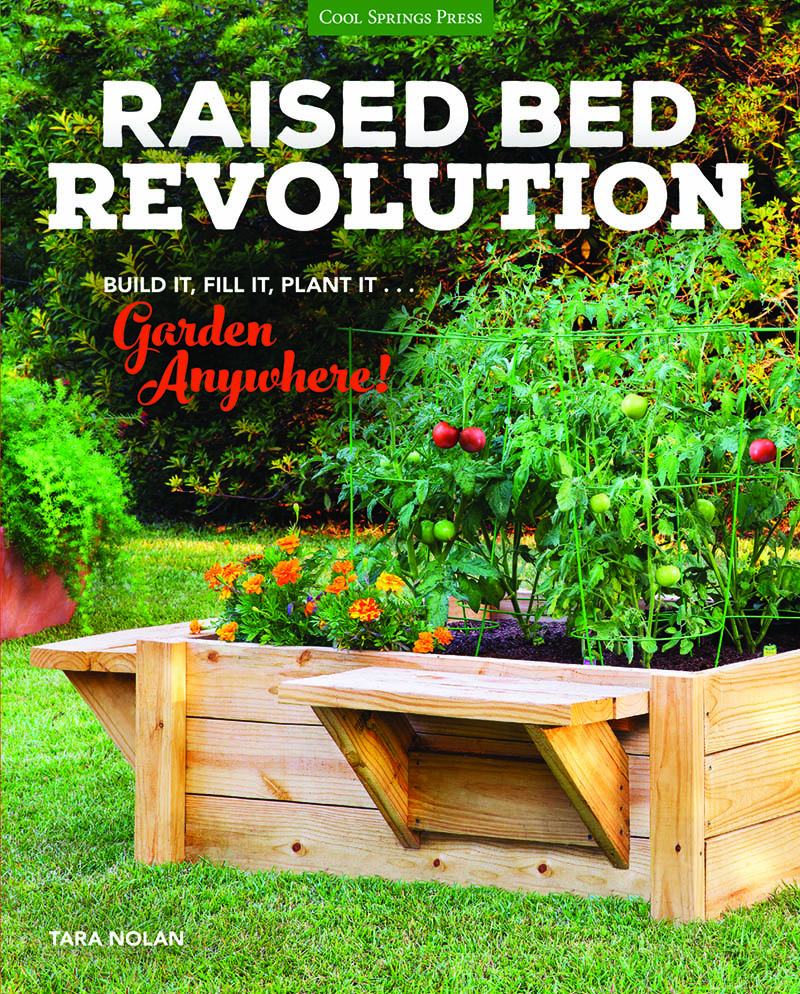Born as a Seed, Raised in a Bed
By Mark and Ben Cullen
www.markcullen.com
As Canadians learn to live with COVID-19, many are asking how to maximize the amount of food they can grow in limited space.
For condo and apartment balconies, we recommend containers: pots, window boxes, hanging baskets. You name it!
For people with real estate, even a small townhouse backyard, you can grow a lot of food if you have enough sunshine. Minimum 6 hours of sun per day for most edibles. The notable exceptions are leafy greens: lettuce, mint, arugula etc.
Producing food in raised beds has several advantages (with more detail below):
1. No need to remove existing soil to plant/sow
2. Sun radiates into the soil much more quickly than at-grade gardens resulting in faster maturing crops.
3. You control the quality of the soil going in
4. Less stooping: easier access to the soil and plants.
5. Easier to weed.
Tara Nolan is the author of the book, “Raised Bed Revolution”. She is our friend and is a wonderful authority on the subject. Things have changed in the business of gardening over recent years to the extent that a comprehensive new book on this topic is indeed welcome.

It’s the perfect time of year to be handy and build something to plant up.
Why?
There are myriad reasons to build a raised bed for your veggies or ornamentals. Tara offers 12 pages of reasons. Some of our favourites include:
– Season extension. Start earlier, harvest later. Soil in raised beds warms more quickly in spring. With a glassed-in structure around a raised bed or using white remay cloth the season extends for several weeks.
– Control soil quality. People frequently ask, “What do I do with clay soil?” When we tell them that they have to dig it out about 30 to 40 cm deep and replace with 50 to 60 cm of new triple mix, they are never happy. When you build a raised bed in your yard, you do not have to dig down and remove soil. Fill the raised bed with the best quality, weed free soil that you can get your hands on.
– Accessibility. Some of the most handsome and practical raised bed gardens that we have seen are designed for wheelchair gardeners. While attending a special event, at Wind Reach Farms [a horse farm and garden dedicated to the needs of disabled children] in Ashburn Ontario recently, Mark saw the most remarkable raised bed gardens designed for this purpose. Be sure to design a wheelchair garden with a ‘wrap around’ feature for plants on the left and right-hand side and with a shelf for shallow rooted plants that allows the gardener to ‘belly up’ to the garden with their legs safely nested under it.
There are caveats to the raised-bed phenomena. They expose roots of winter hardy plants to excess cold in the depth of winter. We recommend choosing plants that are hardy to at least one planting zone above your own. A zone 6 Toronto garden demands that container-grown winter hardy plants are hardy to zone 5. You get the idea.
Raised beds tend to dry more quickly than ground level beds. This can be good as it decreases the likelihood of over watering, which is the root of 90% of all plant problems. But you do have to be vigilant about watering especially during hot, dry weather. The answer to this is to mulch the soil heavily with finely ground up cedar bark mulch or clean straw (more on this in a later story).
This book is a thorough treatise on the subject, and we are delighted that a well-known Canadian writer has produced it. The back third of the book provides many ‘do it yourself’ raised bed projects. And this is the perfect time of year to dig in and build some of them.
Raised Bed Revolution.
Build it, fill it, plant it….Garden Anywhere!
By Tara Nolan
Cool Spring Press



